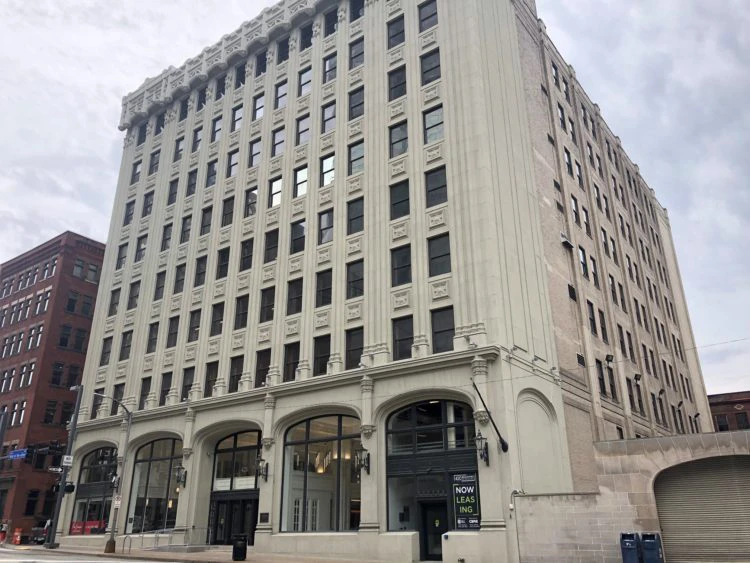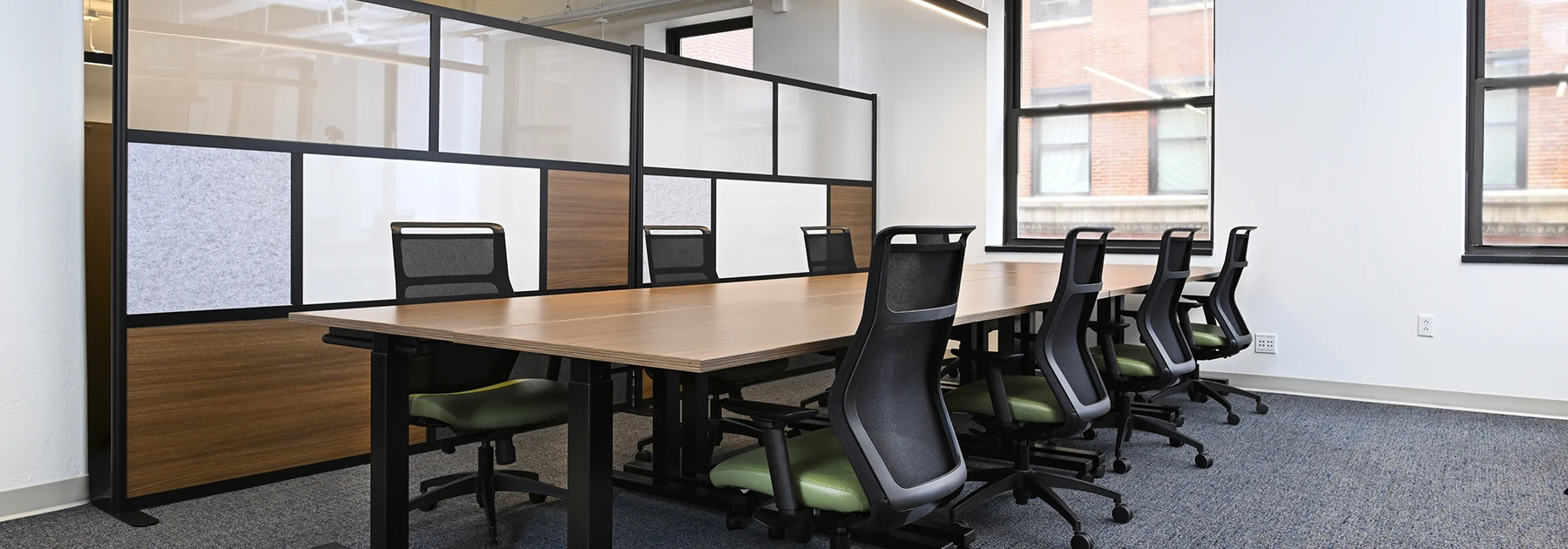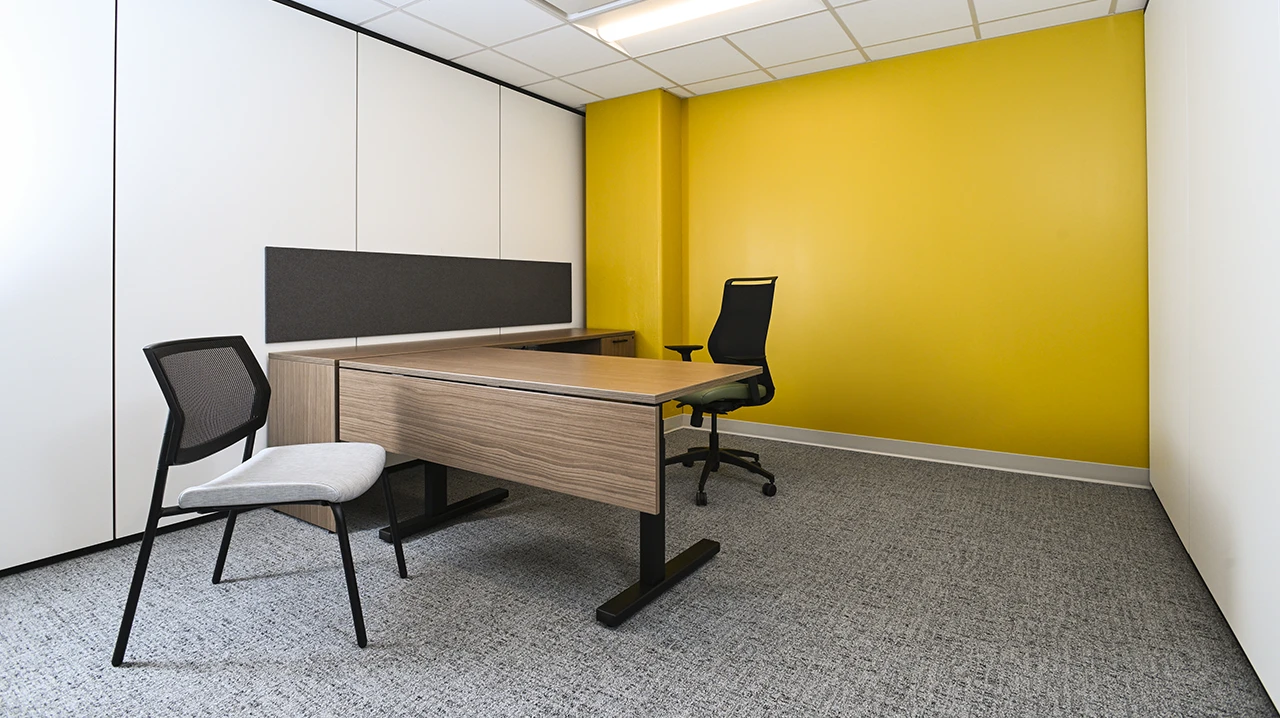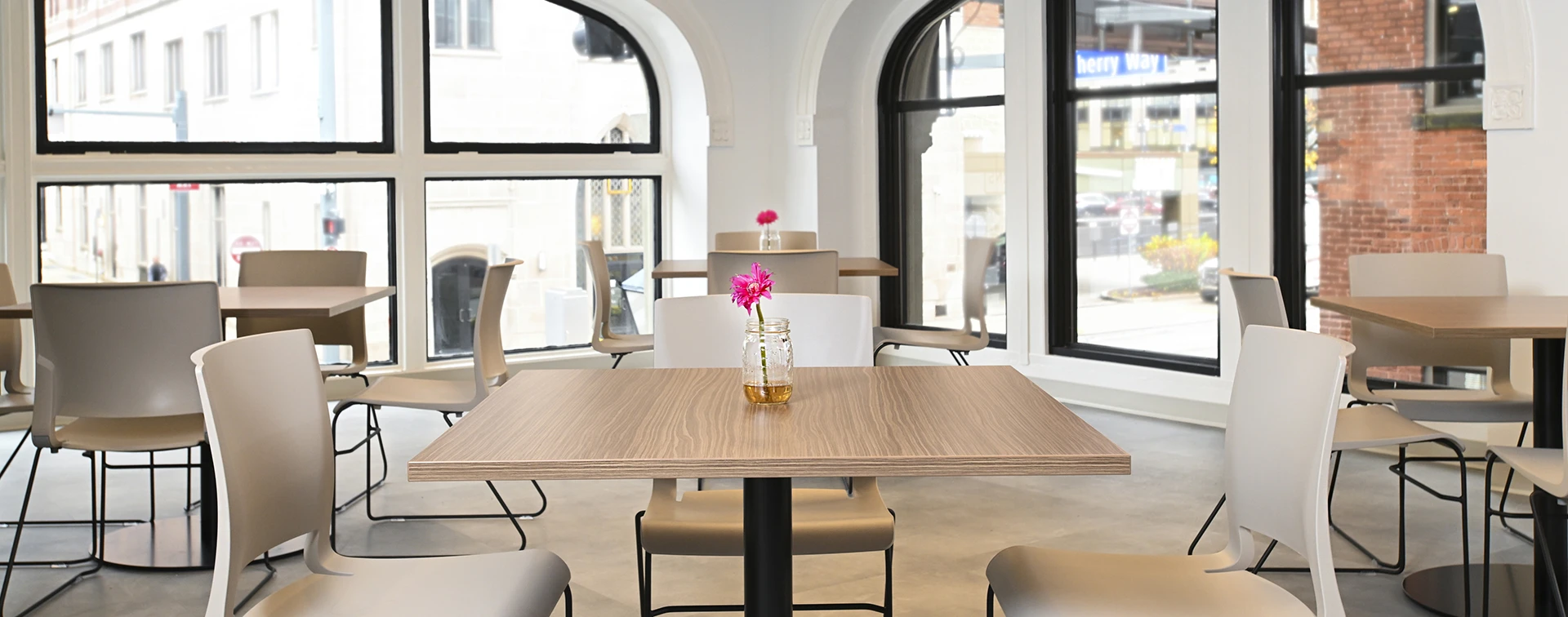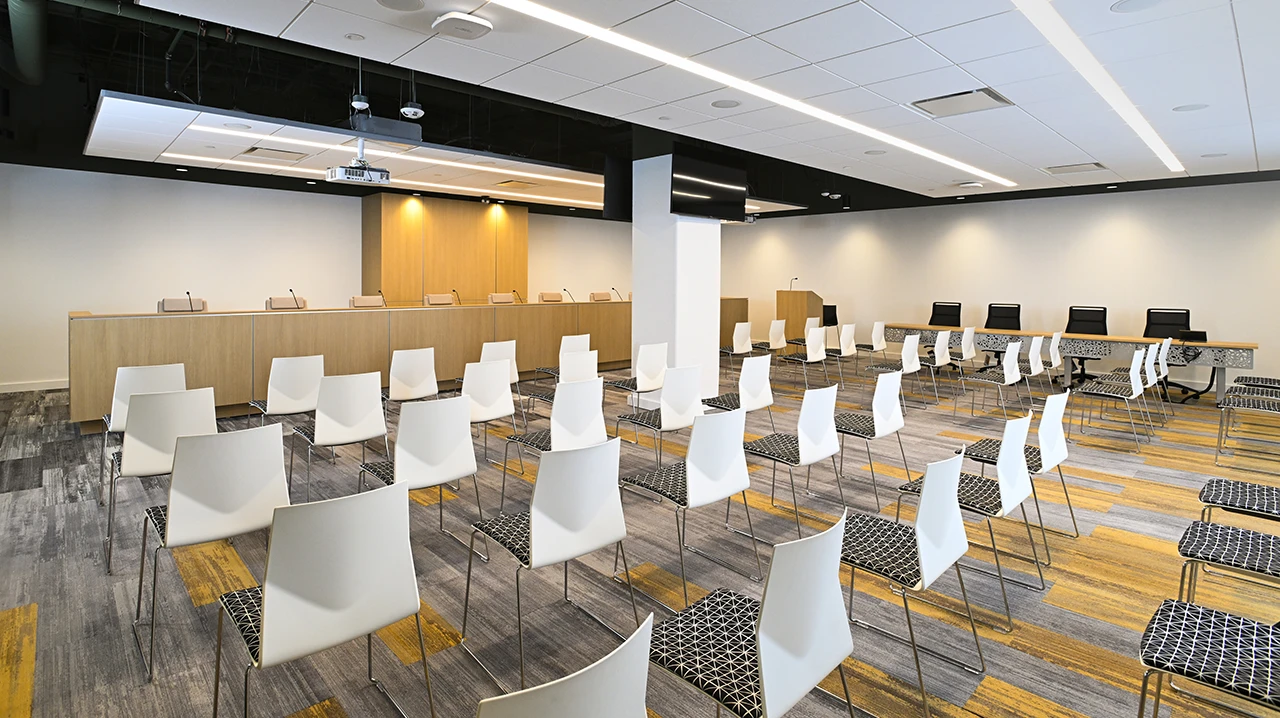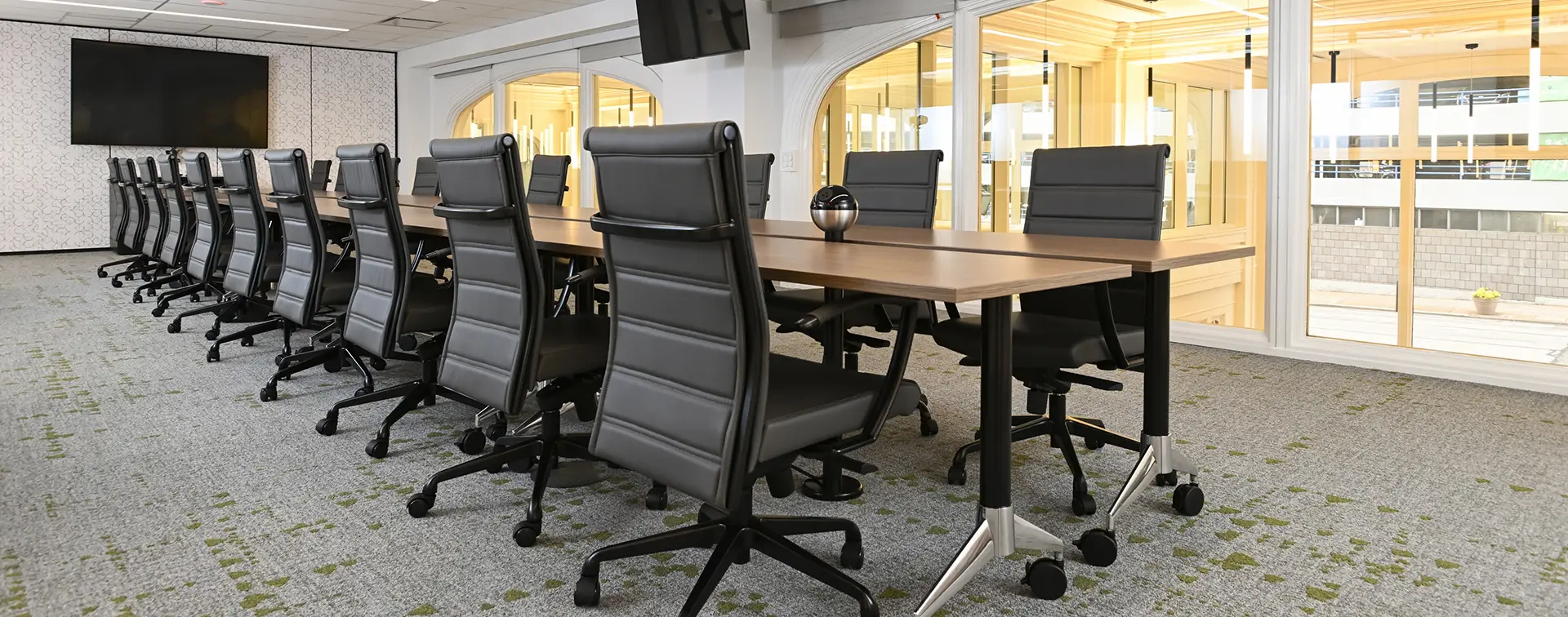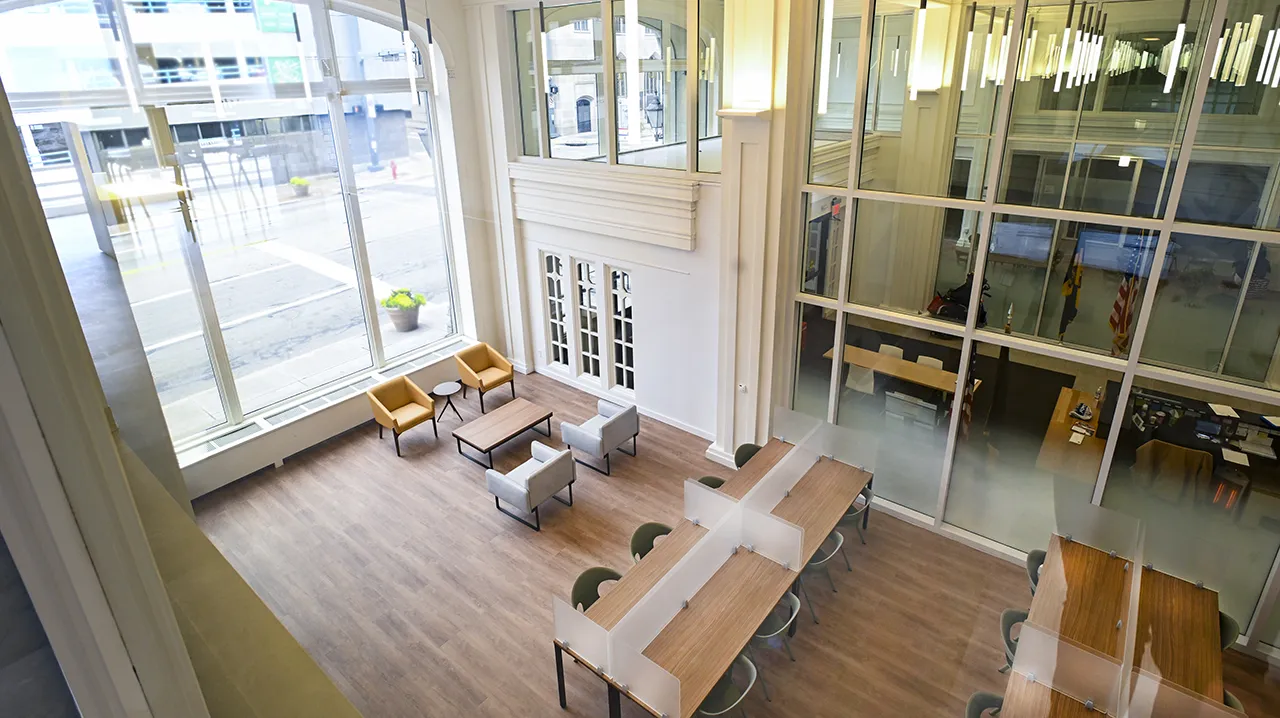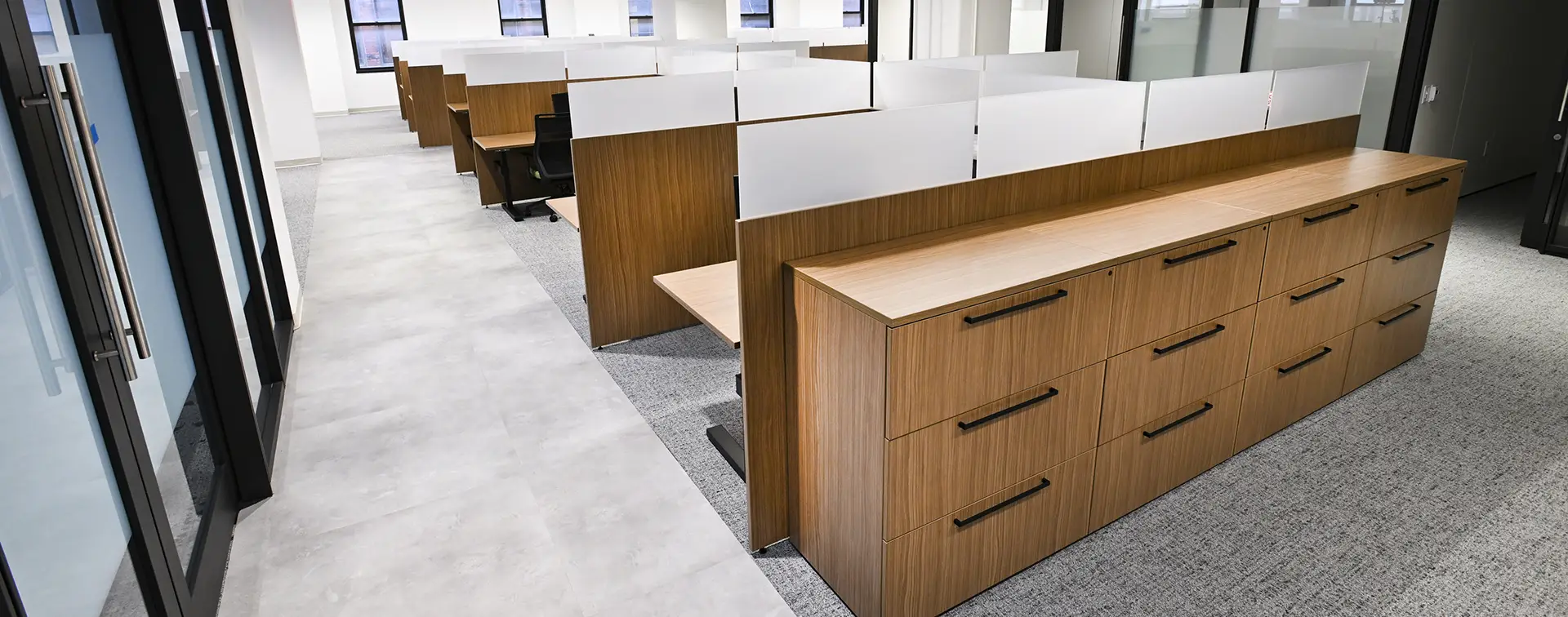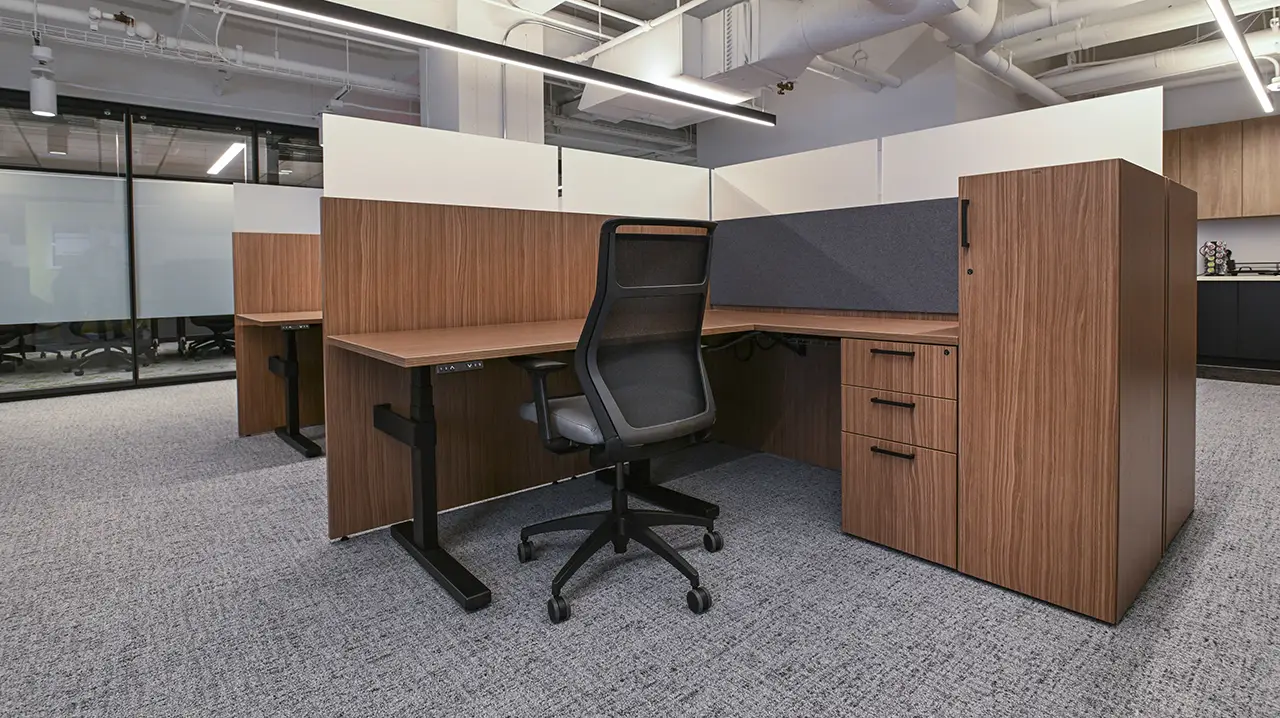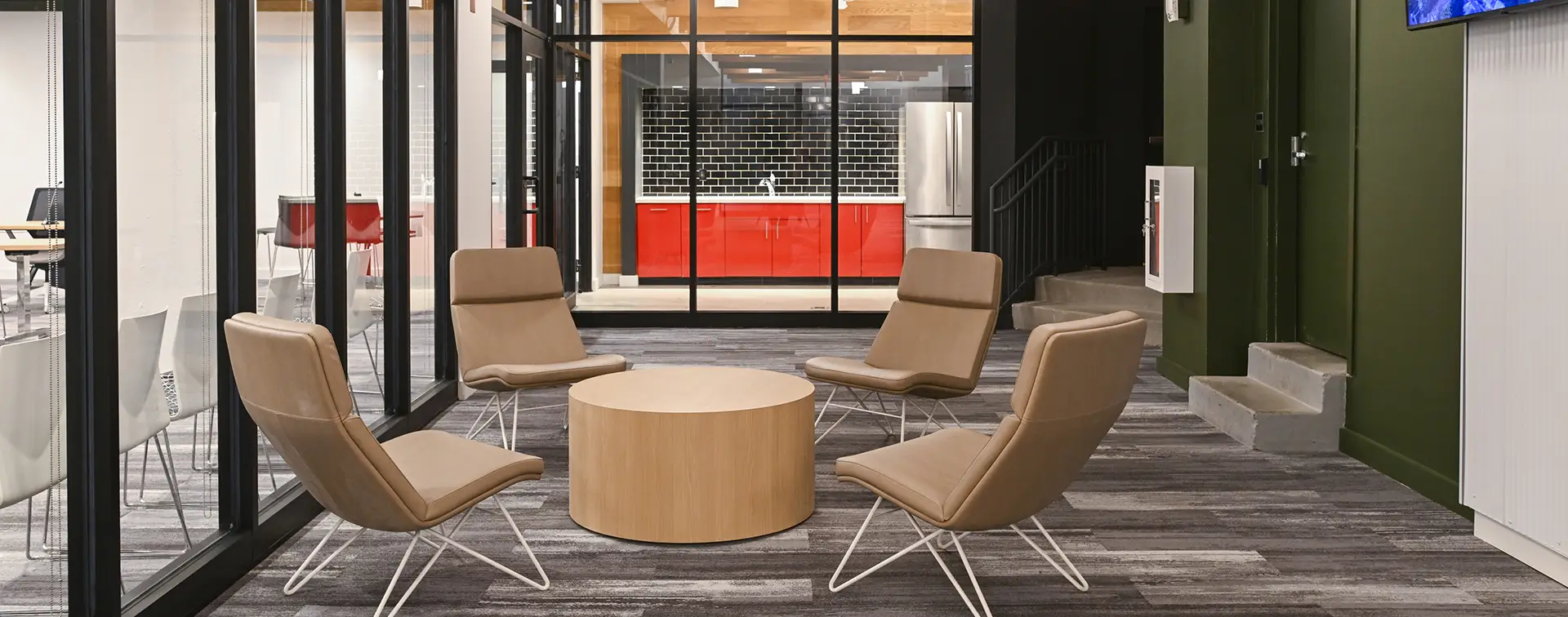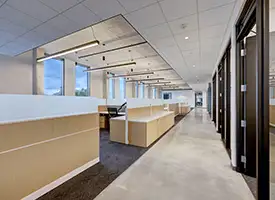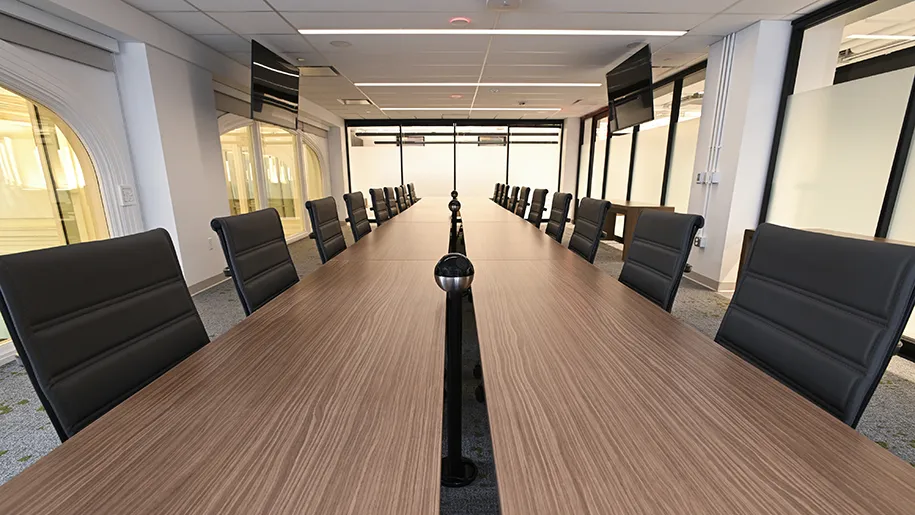
To improve collaboration and efficiencies across departments, the City of Pittsburgh purchased a space for many of its public agencies to relocate to and collectively call “home.” The location? The former Art Institute of Pittsburgh. ODP Business Solutions Workspace Interiors® helped the City furnish the space for comfort, collaboration, and contemporary style, so the City could make some new history of its own.
Project specs:
- Location: Pittsburgh, Pennsylvania
- Space: 157,300 sq. ft.
- Stories: 9
- Floors affected: 5 (including basement)
What’s old is new again — and again and again
Located on the southern edge of Pittsburgh’s central business district, the historic building was originally designed in 1927 by Joseph Kuntz and has become known for its late Gothic Revival design. Before it became the new central hub for the City of Pittsburgh’s departments, it served as the headquarters for the W.J. Gilmore Drug Company and Equitable Gas — and was then purchased by the Art Institute of Pittsburgh.1
